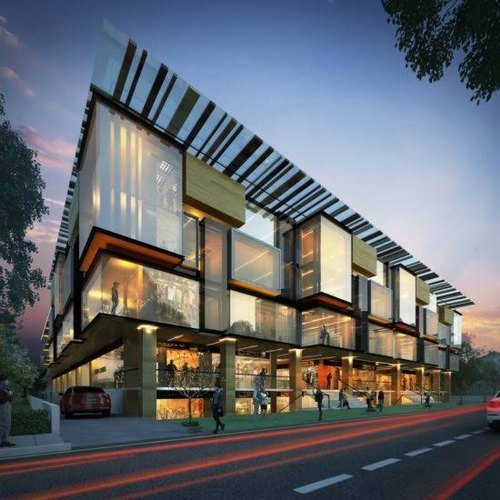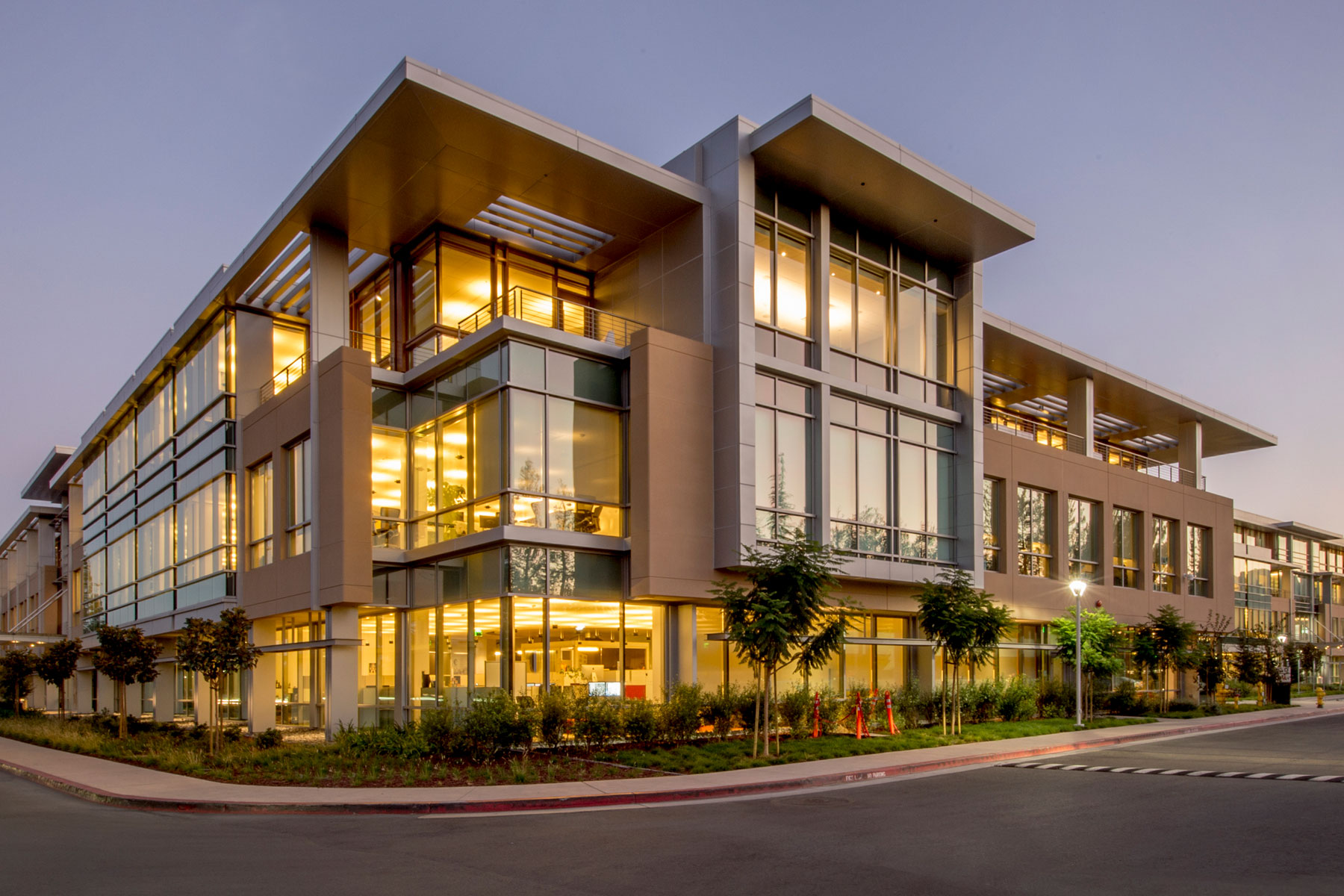Introducing the Comprehensive Solutions Provided by Commercial Architects for Modern Dope
Commercial Architects serve a vital function in modern development tasks. They mix design aesthetic appeals with functionality while sticking to governing requirements. Their expertise expands beyond simple building and construction, including sustainable techniques and cutting-edge innovations. As they navigate intricate zoning laws, Architects team up with various stakeholders to bring visions to life. This complex technique increases inquiries regarding the evolving duty of Architects fit contemporary spaces and the effect of their deal with future growths.
Comprehending the Role of Commercial Architects in Modern Advancement
In modern metropolitan landscapes, Commercial Architects play an essential duty in forming functional and visual spaces that meet varied company needs. Their competence extends past simple layout; they browse complicated zoning legislations, developing codes, and ecological guidelines. By teaming up with clients, they recognize specific needs, making sure that each project aligns with the client's vision while additionally considering functional facets such as sustainability and cost-effectiveness. Commercial Architects are adept at integrating cutting-edge modern technologies and products into their designs, improving both the performance and energy effectiveness of buildings. They carry out detailed site evaluations to assess the possible difficulties and opportunities presented by a location. Furthermore, efficient communication with contractors and various other stakeholders is essential, making sure that the job proceeds efficiently from conception to completion. Eventually, Commercial Architects contribute in producing areas that not just accomplish practical purposes but also add to the general personality and vibrancy of city settings.
Idea Style: Transforming Ideas Into Reality
Concept layout works as a necessary stage in Commercial architecture, where innovative layout remedies arise from innovative brainstorming. This procedure relies on collaborative ideation, bringing together varied viewpoints to refine and enhance preliminary concepts. As ideas take form, they change from abstract concepts into substantial architectural realities.
Cutting-edge Design Solutions
Transforming ideas right into truth is the hallmark of cutting-edge layout solutions in Commercial architecture. These remedies mix imagination with functionality, addressing the one-of-a-kind requirements of modern advancements. By leveraging advanced modern technologies and lasting practices, Architects craft areas that are not only aesthetically enticing but additionally efficient and adaptable. Focus on individual experience drives the style process, guaranteeing that settings foster efficiency and collaboration. Each job gain from a tailored technique, where ideas are thoroughly created to show the customer's vision while considering future trends. Cutting-edge design options additionally prioritize adaptability, permitting alterations over time as service demands progress. Inevitably, these methods boost the total worth of Commercial rooms, making them critical in today's affordable landscape.

Collective Ideation Process
Collaboration works as the backbone of the ideation procedure in Commercial style, cultivating imagination and development amongst diverse stakeholders. Architects, customers, designers, and community members involve in dynamic conversations, ensuring that all viewpoints are considered. This comprehensive method permits the exploration of numerous style concepts, motivating special remedies that align with the task's vision. Via workshops and brainstorming sessions, concepts develop and refine, transforming first ideas right into substantial layouts. Modern technology likewise plays an essential role, with devices such as Structure Information Modeling (BIM) promoting real-time partnership and modifications. Ultimately, this joint ideation process not just improves the layout result however additionally grows a feeling of ownership and investment amongst all events included, leading to successful Commercial advancements.
Zoning Evaluation: Browsing Regulations and Conformity
As developers begin on brand-new projects, recognizing zoning regulations is necessary to ensuring compliance and avoiding costly hold-ups. Zoning analysis plays a vital role in this procedure, as it involves examining local zoning legislations that determine land use, constructing elevation, density, and troubles. Commercial Architects possess the knowledge to navigate these complicated regulations, helping customers recognize permissible usages and any type of required variations.
Sustainable Layout Practices: Structure for the Future
Sustainable design methods are increasingly crucial in the domain of Commercial style, specifically as ecological concerns remain to rise. Architects prioritize environmentally friendly products, energy-efficient systems, and layout techniques that minimize waste and ecological influence. Integrating renewable resource resources, such as photovoltaic panels and wind generators, web link enables structures to produce their own power and decrease dependence on fossil fuels.Furthermore, lasting design highlights the value of indoor ecological top quality. This consists of utilizing all-natural light, enhancing ventilation, and choosing non-toxic materials to enhance passenger wellness and performance. Environment-friendly roofing systems and living wall surfaces are additionally preferred attributes that add to biodiversity and metropolitan cooling.Additionally, Commercial Architects frequently integrate water preservation techniques, like rainwater harvesting and drought-resistant landscaping. Through these ingenious strategies, they develop rooms that not just meet modern requirements yet additionally foster a sustainable future, dealing with the expanding demand for liable growth in the contemporary globe.
Task Monitoring: Ensuring Timely and Reliable Execution
Efficient task monitoring is necessary for making sure that Commercial style projects are finished promptly and within budget. This function includes a variety of obligations, consisting of the coordination of different stakeholders, timelines, and resources. Commercial Architects leverage their proficiency to produce in-depth project strategies that lay out critical milestones and deliverables, permitting methodical progress tracking.Regular communication amongst group participants and customers is critical, fostering transparency and promoting timely decision-making. Danger monitoring strategies are also employed to recognize prospective challenges early, allowing proactive options to be created. By utilizing innovative task management devices, Architects can keep track of project efficiency in real-time, making modifications as essential to maintain performance.
Interior Decoration: Developing Functional and Visual Areas
Interior design plays an important function in improving both capability and aesthetics within Commercial rooms. Reliable space preparation can optimize workflow and improve customer experience, while aesthetic design principles contribute to a visually appealing setting - commercial architects. Together, these aspects create rooms that are not only sensible but likewise inspiring
Space Planning Effectiveness
While making best use of the utility of available space, Commercial Architects prioritize space planning effectiveness to produce both functional and aesthetically pleasing atmospheres. This approach involves cautious analysis of the spatial format to ensure ideal use every square foot. Architects consider factors such as operations, availability, and natural light to boost use. By tactically placing furnishings, devices, and workstations, they help with activity and communication among users, advertising efficiency. Additionally, zoning various areas for particular functions assists in taking care of sound and personal privacy, producing an unified environment. With reliable area preparation, Commercial Architects can transform constraints right into opportunities, ensuring that each room fulfills the varied demands of its residents while adhering to governing needs and sector criteria.
Visual Design Concepts
Aesthetic layout principles play a necessary function fit atmospheres that are not just functional however likewise visually enticing. These principles assist Commercial Architects in developing areas that reverberate with users while enhancing brand identification. Key aspects include equilibrium, proportion, and harmony, which collaborate to produce a cohesive appearance. Color pattern and materials are carefully picked to stimulate preferred emotions and support the overall theme. In addition, lighting plays a crucial duty, influencing state of mind go to this web-site and exposure while highlighting building functions. By integrating these concepts, Architects ensure that rooms are not only useful but also welcoming and inspiring. Ultimately, reliable visual style fosters a positive customer experience, encouraging interaction and satisfaction in Commercial atmospheres.
Collaboration With Stakeholders: Fostering Effective Partnerships
Successful collaborations in Commercial design rest on efficient collaboration with stakeholders, ensuring that every voice is heard and valued. This collaborative approach includes interesting different parties, including customers, professionals, and area participants, throughout the layout and development process. By fostering open interaction, Commercial Architects can address problems, gather understandings, and straighten the task's vision with stakeholder expectations.The combination of varied perspectives enhances creativity and development, bring about more useful and aesthetically pleasing styles. Routine Visit This Link conferences, responses sessions, and workshops promote this dialogue, permitting Architects to adjust their plans in response to stakeholder input. Additionally, establishing trust through transparency and accountability enhances these collaborations, causing a smoother task execution.Ultimately, the success of modern growths depends upon the Architects' ability to navigate and integrate differing passions, developing a collective environment that promotes shared goals and common success.
Frequently Asked Questions
How Do Commercial Architects Take Care Of Budget Constraints During a Task?

What Kinds of Software Application Do Commercial Architects Typically Use?
Commercial Architects commonly make use of software application such as AutoCAD for preparing, Revit for Building Information Modeling, SketchUp for 3D modeling, and job management devices like Microsoft Job to improve cooperation and streamline workflows throughout the style procedure.
Can Commercial Architects Aid With Getting Funding for Projects?
Commercial Architects can help in obtaining funding for jobs by preparing thorough propositions, assisting to articulate style visions, and supplying monetary estimates that can boost the possibility of protecting needed funding from investors or banks.
How Do Architects Make Sure Security During the Building Process?
Architects guarantee safety and security throughout construction by carrying out rigorous layout standards, coordinating with designers, conducting routine site evaluations, sticking to neighborhood laws, and fostering communication among all stakeholders to mitigate dangers and promote a safe working atmosphere.
What Ongoing Support Do Architects Give After Task Completion?
After job conclusion, Architects provide continuous support via upkeep examinations, performance evaluations, and layout adjustments. They guarantee structures satisfy developing demands, address prospective issues, and maintain conformity with regulations, cultivating a long-lasting partnership with clients.